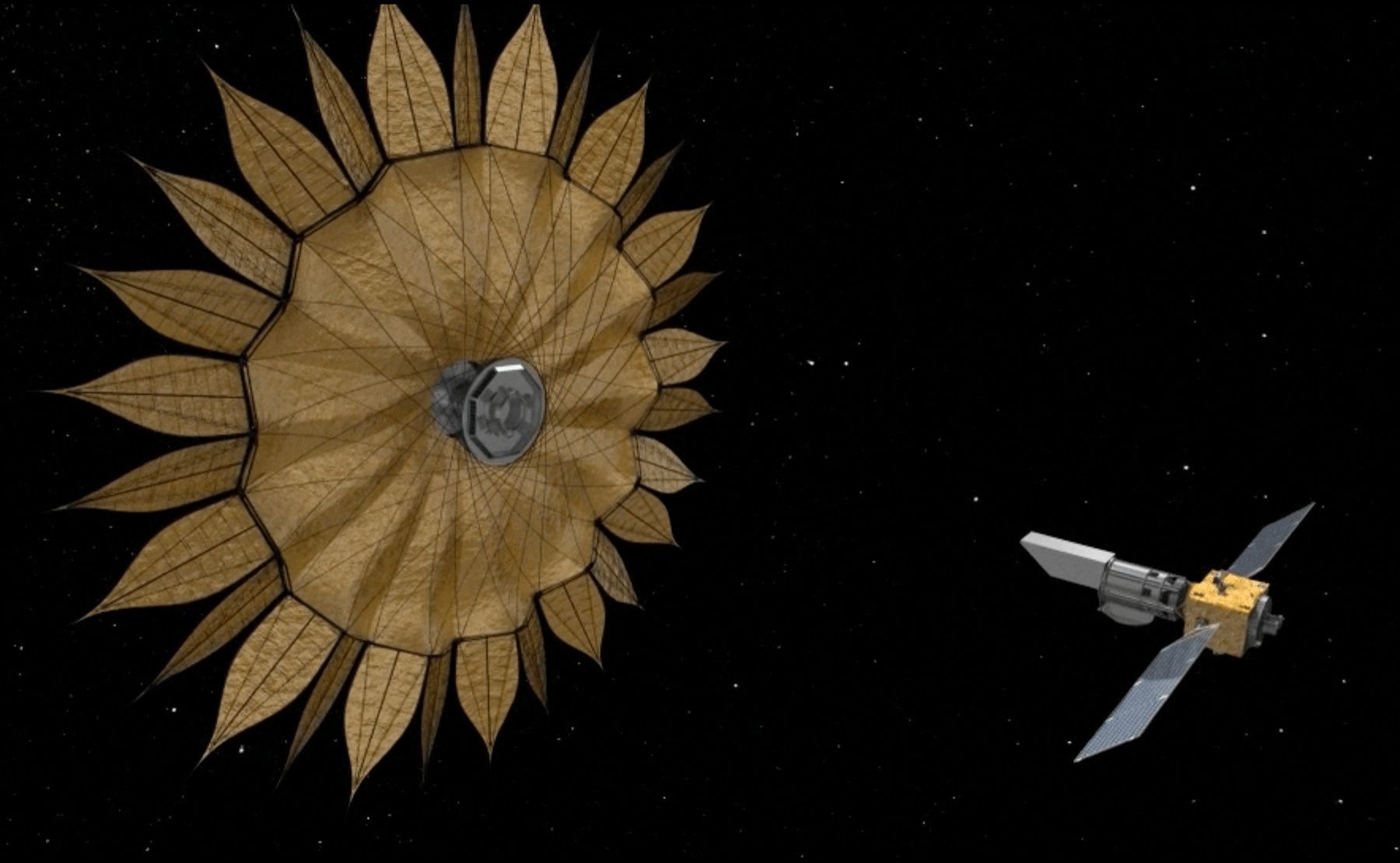

In the past decade, hunting for Earth-like exoplanets has become one of astronomy’s top priorities. Combing through billions of galaxies and star systems for signs of life is akin to searching for a needle in a haystack, but a new NASA approach aims to make them infinitely easier to spot.
The proposed study, dubbed the Hybrid Observatory for Earth-like Exoplanets (HOEE), will establish a two-pronged observatory—both on Earth and in orbit—to create one of the most powerful planet-seekers ever designed. HOEE plans to use the next-generation of powerful telescopes currently under construction, such as the Giant Magellan Telescope and the Extremely Large Telescope (ELT) in Chile’s Atacama Desert, along with a space-based instrument called a ‘starshade,’ an object that can be used to block the light of an extremely bright object.
At the moment, there are two ways researchers can view exoplanets directly. Scientists can take pictures using telescopes’ high-powered cameras which can be sent back through the air to Earth via radio waves to spot where a planet might be orbiting a star. For example, the Hubble Space Telescope has found hundreds of exoplanets using its digital camera. Another strategy astronomers use is a method called transit spectroscopy. When light from a nearby star travels through the atmosphere of an orbiting planet, it takes on properties of what it’s passed through. As that light reaches a telescope in space and on the ground, scientists can process loads of data, such as atmospheric and structural information, about the environments that light has passed through. The James Webb Space Telescope used this method to make observations of the exoplanet Wasp-96. But while the JWST is capable of detecting exoplanets, its primary research objectives and design aren’t focused on searching for extraterrestrial life on far-off planets. That’s where a hybrid observatory, a two-part system that utilizes instruments both on the ground and in space, could come into play.
[Related: NASA’s official exoplanet tally has passed 5,000 worlds]
The light of distant Earth-like planets is extremely faint, making it easy for an exoplanet’s presence to be washed out by stars as brilliant as our sun, explains John Mather, a senior astrophysicist in the Observational Cosmology Laboratory at NASA’s Goddard Space Flight Center and lead for the HOEE study. That’s not a good thing when astronomers are searching for places in the galaxy similar to our solar system.
“The sun is 10 billion times as bright as the Earth,” says Mather. “That’s an awful lot of glare.” Searching for small objects, especially “a little Earth,” within that intense glare is extremely difficult, he says. But a starshade offers a way to block a host star’s radiance.
Overall, a starshade is an object that would be positioned in space between a telescope on Earth and a star astronomers would like to observe, essentially blocking the light before it reached the telescope’s mirrors. A functional starshade would have to be more than 300 feet in diameter, and be positioned at least 100,000 miles away from Earth. Because it would be so far away, it would also need to be able to operate without human intervention. That said, the starshade would merely be a tool that would allow any telescope on Earth to peer generally unimpeded into the cosmos, but it’s still up in the air if one could be made to conduct any sort of science of its own.
If deployed, this kind of hybrid observatory would allow scientists to explore corners of the Milky Way and other systems of interest much closer than existing technologies can today. Mather says a one minute exposure taken by a hybrid observatory would be long enough to prove that there’s an exoplanet in the area, and a one-hour exposure could give clues into whether there is oxygen or water in its atmosphere.
[Related: Let’s make 2022 the year of the sunbrella]
But the technology needed to construct a starshade is still years away, Mather says. One of the biggest challenges behind the concept is just how big it would need to be to operate the way scientists would want it to. Past preliminary designs made by NASA’s Jet Propulsion Laboratory have been too big to fit into a rocket, but researchers are looking to concepts that could be compartmentalized and then opened up later, similar to JWST’s folded mirrors. “Nobody’s ever even tried something so big. It’s just enormous,” Mather says. “It’s a very big deal to put something so big into space.”
Although NASA has not pursued development, the agency has recently launched the Ultralight Starshade Structural Design Challenge, a competition that seeks to collect observatory design ideas from the public. The top five submissions will have a chance to win prizes, with first place winning $3,000. At the time of this writing there are 11 entries, but interested participants have until August 22 to submit designs. Mather, who will lead the team that will select the winner, said tapping into the public’s ideas could help push the concept of starshades off the ground.
“We are trying to solve some very nearly impossible problems of mechanical engineering,” he says. “On the other hand, I think it’s worth trying.”
